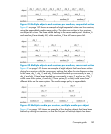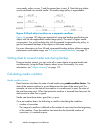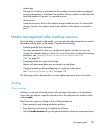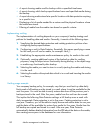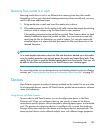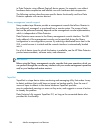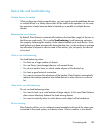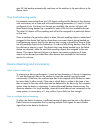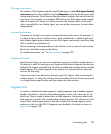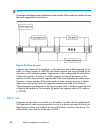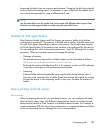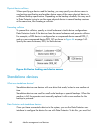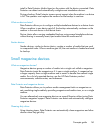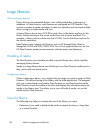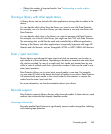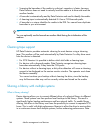Disk agent concurrency
The number of Disk Agents started for each Media Agent is called Disk Agent (backup)
concurrency and can be modified using the Advanced options for the device or when
configuring a backup. Data Protector provides default numbers that are sufficient for
most cases. For example, on a standard DDS device, two Disk Agents send enough
data for the device to stream. For library devices with multiple drives where each
drive is controlled by one Media Agent, you can set the concurrency for each drive
independently.
Increased performance
If properly set, backup concurrency increases backup performance. For example, if
you have a library device with four drives, each controlled by a Media Agent and
each Media Agent receives data from two Disk Agents concurrently, data from eight
disks is backed up simultaneously.
Device streaming is also dependent on other factors, such as network load and the
block size of the data written to the device.
For related information, see “Backup sessions” on page 220.
Multiple data streams
Data Protector allows you to concurrently back up parts of a disk to multiple devices.
This feature is useful for backing up very large and fast disks to relatively slow devices.
Multiple Disk Agents read data from the disk in parallel and send the data to multiple
Media Agents. This method speeds up the backup, but requires that you take into
account the following:
If one mount point was backed up through many Disk Agents, data is contained in
multiple objects. To restore the whole mount point define all parts of the mount point
in a single backup specification and then restore the entire session.
Segment size
A medium is divided into data segments, catalog segments and a header segment.
Header information is stored in the header segment, which is the same size as the
block size. Data is stored in data blocks of data segments. Information about each
data segment is stored in the corresponding catalog segment. This information is first
stored in the Media Agent memory and then written to a catalog segment on the
medium as well as to the IDB. All segments are divided by file marks as shown in
Figure 45 on page 158.
Concepts guide 157



